Friday, March 19, 2021
Salute to Leeds and Northrup part 3: Weather.
Following part 1 and part 2.
I'm cheating this time. None of these instruments were in the Leeds and Northrup catalog. LN sold some weather sets, but not these exact items. I picked them from an 1885 British science equipment catalog, aiming for beauty and 'bridginess'.
We'll do this scene outside, since Spring has finally arrived after a miserable LaNina winter. The items are arrayed in a science fair layout, not really set up for measuring weather.
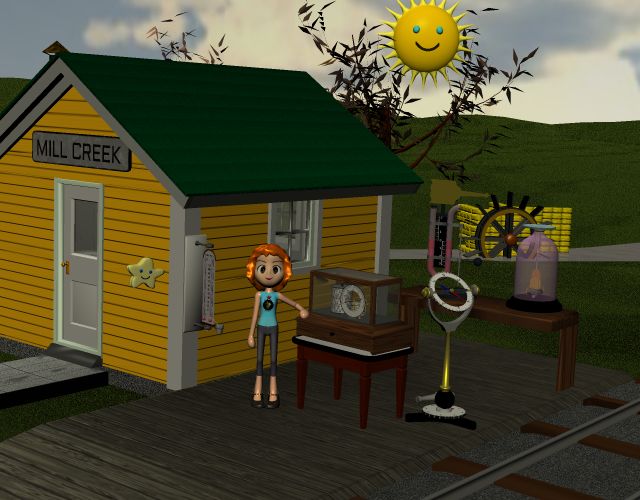 Happystar begins the fair with the most obvious item, a wet-dry humidity thermometer. Balance: Two equivalent thermometers receiving the same sun and wind, but one of them is also losing heat by evaporation.
Happystar begins the fair with the most obvious item, a wet-dry humidity thermometer. Balance: Two equivalent thermometers receiving the same sun and wind, but one of them is also losing heat by evaporation.
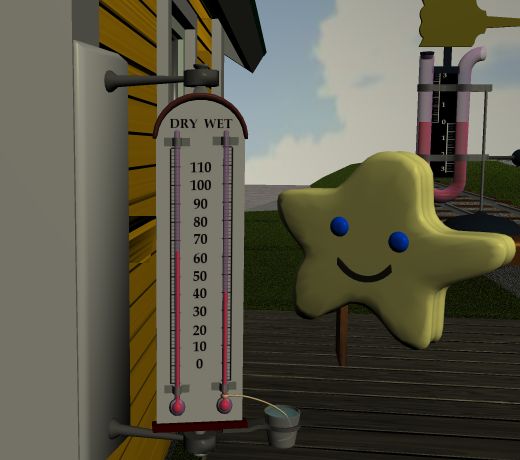 = = = = =
Meteorologists weren't afraid to get down in the dirt. Another balance. Two identical thermometers, shielded from wind, and mounted on twigs as per the catalog's instructions. (They even look like little bridges.) One has a black bulb to absorb solar radiation, the other has a bright bulb. The bright-bulb side of the bridge is reading direct soil temperature by contact.
= = = = =
Meteorologists weren't afraid to get down in the dirt. Another balance. Two identical thermometers, shielded from wind, and mounted on twigs as per the catalog's instructions. (They even look like little bridges.) One has a black bulb to absorb solar radiation, the other has a bright bulb. The bright-bulb side of the bridge is reading direct soil temperature by contact.
 [See the Dalen Sun Valve for a more active and interesting use of a bright-dark bridge.]
= = = = =
Now Polistra shows a recording barograph. This is beautiful, not bridgy, since the aneroid isn't being balanced against an isolated aneroid.
[See the Dalen Sun Valve for a more active and interesting use of a bright-dark bridge.]
= = = = =
Now Polistra shows a recording barograph. This is beautiful, not bridgy, since the aneroid isn't being balanced against an isolated aneroid.
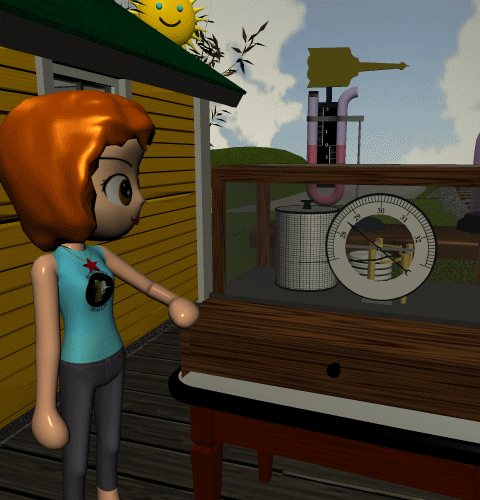 The innards with the lid off: When air pressure rises, it compresses the aneroid. The top pushes down, and sends its movement to the graph pen and the dial via two levers.
The innards with the lid off: When air pressure rises, it compresses the aneroid. The top pushes down, and sends its movement to the graph pen and the dial via two levers.

= = = = = Polistra is showing a Lind anemometer.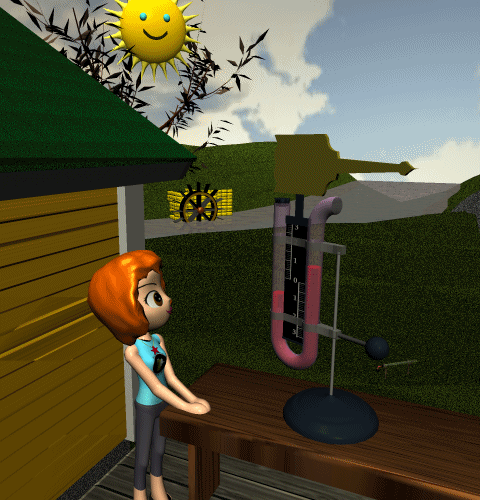 This was definitely bridgy. A classic drain trap, with one side sealed and the other side open to air. The vane on top insured that the open end faced into the wind, so it received higher pressure than ambient. The numbers on the scale are literal inches of water; the sum of the two sides gave the result.
The catalog's writeup on Lind has a lookup table to convert the inches into pounds per square foot, and a Designation of Such Wind.
This was definitely bridgy. A classic drain trap, with one side sealed and the other side open to air. The vane on top insured that the open end faced into the wind, so it received higher pressure than ambient. The numbers on the scale are literal inches of water; the sum of the two sides gave the result.
The catalog's writeup on Lind has a lookup table to convert the inches into pounds per square foot, and a Designation of Such Wind.
= = = = =
The next item is bridgy, but I picked it for its wonderfully clanky name:
Bohnenberger's Electroscope with Zamboni's Dry Piles.
Try fitting that name into a commercial jingle. Bohnenberger's Electroscope charges good, like a Zamboni's Dry Pile should.
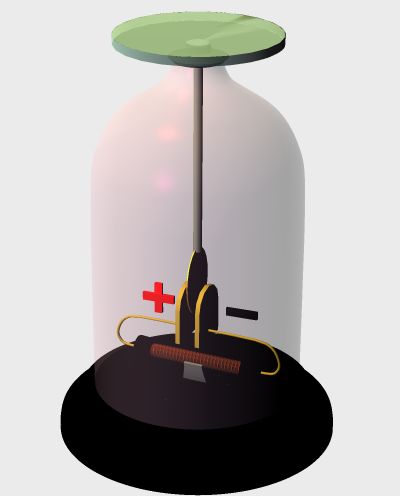 It's a standard gold-leaf electroscope measuring atmospheric charge, leveraged by the Dry Piles. The 'piles' are a dry battery with 800 paper-thin cells packed into a short cylinder. It maintains a strong potential difference between the plates. The neutral gold leaf is suspended between the plates, connected to a pole that senses the atmosphere. Because of the high 'leverage' from the Zamboni, any positive or negative change in the atmosphere will slap it to one side or the other.
It's a standard gold-leaf electroscope measuring atmospheric charge, leveraged by the Dry Piles. The 'piles' are a dry battery with 800 paper-thin cells packed into a short cylinder. It maintains a strong potential difference between the plates. The neutral gold leaf is suspended between the plates, connected to a pole that senses the atmosphere. Because of the high 'leverage' from the Zamboni, any positive or negative change in the atmosphere will slap it to one side or the other.
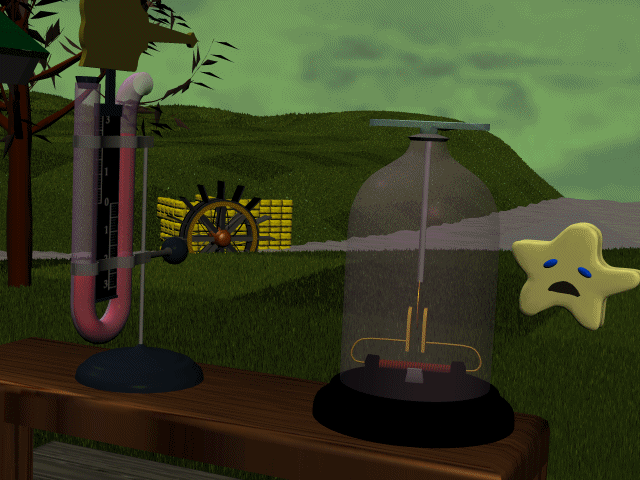 Happystar is an Okie, so he doesn't need Bohnenberger or Zamboni to tell him that it's time to man the hail cannons!
Happystar is an Okie, so he doesn't need Bohnenberger or Zamboni to tell him that it's time to man the hail cannons!
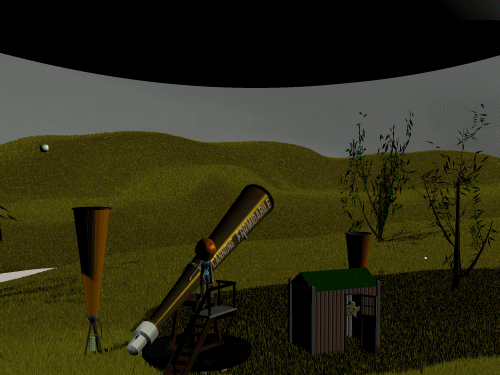 = = = = =
Why so stormy? Not carbon. The earth's magnetic field is weakening, preparing for a pole shift. This has been OBVIOUS for about ten years. Ocean currents are being reshaped by the hot spot in the south Atlantic, which is closely related to the movements of magma under the surface. Bacteria, who move clouds around, are losing their bearings and getting stuck. Now larger sea animals are also losing their bearings, swimming in circles.
The Declinometer was meant to detect the shapes and changes of the magnetic field at all angles.
= = = = =
Why so stormy? Not carbon. The earth's magnetic field is weakening, preparing for a pole shift. This has been OBVIOUS for about ten years. Ocean currents are being reshaped by the hot spot in the south Atlantic, which is closely related to the movements of magma under the surface. Bacteria, who move clouds around, are losing their bearings and getting stuck. Now larger sea animals are also losing their bearings, swimming in circles.
The Declinometer was meant to detect the shapes and changes of the magnetic field at all angles.
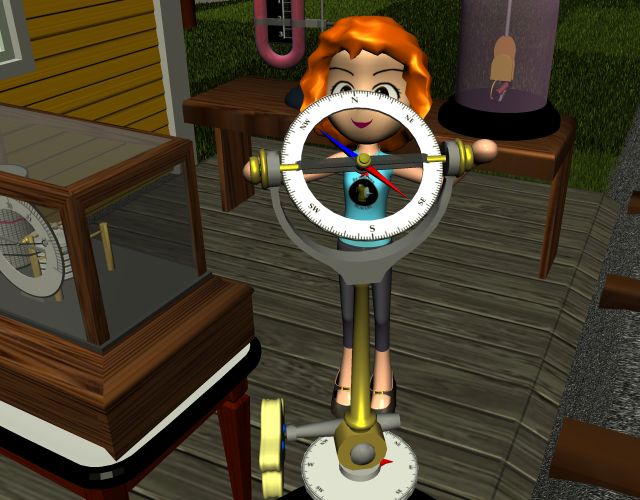 Like a telescope, it adjusts for altitude and azimuth. It seems to have a little transit at the bottom for sighting a landmark. The compass needle is suspended tightly between agate bearings, so it reads the net field direction or declination at various settings of altitude and azimuth.
= = = = =
Graphic sidenote: I've shown the electroscope snapping when lightning strikes, to make the animation obvious. I suspect a real electroscope would show the atmosphere gradually charging one way, then slapping the other way and returning to neutral when lightning strikes.
Like a telescope, it adjusts for altitude and azimuth. It seems to have a little transit at the bottom for sighting a landmark. The compass needle is suspended tightly between agate bearings, so it reads the net field direction or declination at various settings of altitude and azimuth.
= = = = =
Graphic sidenote: I've shown the electroscope snapping when lightning strikes, to make the animation obvious. I suspect a real electroscope would show the atmosphere gradually charging one way, then slapping the other way and returning to neutral when lightning strikes.
 Happystar begins the fair with the most obvious item, a wet-dry humidity thermometer. Balance: Two equivalent thermometers receiving the same sun and wind, but one of them is also losing heat by evaporation.
Happystar begins the fair with the most obvious item, a wet-dry humidity thermometer. Balance: Two equivalent thermometers receiving the same sun and wind, but one of them is also losing heat by evaporation.
 = = = = =
Meteorologists weren't afraid to get down in the dirt. Another balance. Two identical thermometers, shielded from wind, and mounted on twigs as per the catalog's instructions. (They even look like little bridges.) One has a black bulb to absorb solar radiation, the other has a bright bulb. The bright-bulb side of the bridge is reading direct soil temperature by contact.
= = = = =
Meteorologists weren't afraid to get down in the dirt. Another balance. Two identical thermometers, shielded from wind, and mounted on twigs as per the catalog's instructions. (They even look like little bridges.) One has a black bulb to absorb solar radiation, the other has a bright bulb. The bright-bulb side of the bridge is reading direct soil temperature by contact.
 [See the Dalen Sun Valve for a more active and interesting use of a bright-dark bridge.]
= = = = =
Now Polistra shows a recording barograph. This is beautiful, not bridgy, since the aneroid isn't being balanced against an isolated aneroid.
[See the Dalen Sun Valve for a more active and interesting use of a bright-dark bridge.]
= = = = =
Now Polistra shows a recording barograph. This is beautiful, not bridgy, since the aneroid isn't being balanced against an isolated aneroid.
 The innards with the lid off: When air pressure rises, it compresses the aneroid. The top pushes down, and sends its movement to the graph pen and the dial via two levers.
The innards with the lid off: When air pressure rises, it compresses the aneroid. The top pushes down, and sends its movement to the graph pen and the dial via two levers.

= = = = = Polistra is showing a Lind anemometer.
 This was definitely bridgy. A classic drain trap, with one side sealed and the other side open to air. The vane on top insured that the open end faced into the wind, so it received higher pressure than ambient. The numbers on the scale are literal inches of water; the sum of the two sides gave the result.
The catalog's writeup on Lind has a lookup table to convert the inches into pounds per square foot, and a Designation of Such Wind.
This was definitely bridgy. A classic drain trap, with one side sealed and the other side open to air. The vane on top insured that the open end faced into the wind, so it received higher pressure than ambient. The numbers on the scale are literal inches of water; the sum of the two sides gave the result.
The catalog's writeup on Lind has a lookup table to convert the inches into pounds per square foot, and a Designation of Such Wind.
To use the instrument it is simply filled up to the zero point with water, and then exposed to the wind; the difference in the level of the water gives the force of the wind in inches and tenths, by adding together the amount of depression in one limb, and elevation in the other, the sum of the two being the height of a column of water which the wind is capable of sustaining at that time. Table showing the Force of wind on a square foot, for different heights of the column of Water in Lind's Wind-Gauge.
| Inches. | Force in lbs. | Common designation of such Wind. |
| 6 | 31.75 | A Hurricane. |
| 5 | 26.04 | A violent Storm. |
| 4 | 20.83 | A great Storm. |
| 3 | 15.62 | A Storm. |
| 2 | 10.42 | A strong Wind. |
| 1 | 5.21 | A high Wind. |
| .5 | 2.60 | A brisk Wind. |
| .1 | 0.52 | A fresh Breeze. |
| .05 | 0.26 | A gentle Breeze. |
| 0 | 0 | A Calm. |
 It's a standard gold-leaf electroscope measuring atmospheric charge, leveraged by the Dry Piles. The 'piles' are a dry battery with 800 paper-thin cells packed into a short cylinder. It maintains a strong potential difference between the plates. The neutral gold leaf is suspended between the plates, connected to a pole that senses the atmosphere. Because of the high 'leverage' from the Zamboni, any positive or negative change in the atmosphere will slap it to one side or the other.
It's a standard gold-leaf electroscope measuring atmospheric charge, leveraged by the Dry Piles. The 'piles' are a dry battery with 800 paper-thin cells packed into a short cylinder. It maintains a strong potential difference between the plates. The neutral gold leaf is suspended between the plates, connected to a pole that senses the atmosphere. Because of the high 'leverage' from the Zamboni, any positive or negative change in the atmosphere will slap it to one side or the other.
 Happystar is an Okie, so he doesn't need Bohnenberger or Zamboni to tell him that it's time to man the hail cannons!
Happystar is an Okie, so he doesn't need Bohnenberger or Zamboni to tell him that it's time to man the hail cannons!
 = = = = =
Why so stormy? Not carbon. The earth's magnetic field is weakening, preparing for a pole shift. This has been OBVIOUS for about ten years. Ocean currents are being reshaped by the hot spot in the south Atlantic, which is closely related to the movements of magma under the surface. Bacteria, who move clouds around, are losing their bearings and getting stuck. Now larger sea animals are also losing their bearings, swimming in circles.
The Declinometer was meant to detect the shapes and changes of the magnetic field at all angles.
= = = = =
Why so stormy? Not carbon. The earth's magnetic field is weakening, preparing for a pole shift. This has been OBVIOUS for about ten years. Ocean currents are being reshaped by the hot spot in the south Atlantic, which is closely related to the movements of magma under the surface. Bacteria, who move clouds around, are losing their bearings and getting stuck. Now larger sea animals are also losing their bearings, swimming in circles.
The Declinometer was meant to detect the shapes and changes of the magnetic field at all angles.
 Like a telescope, it adjusts for altitude and azimuth. It seems to have a little transit at the bottom for sighting a landmark. The compass needle is suspended tightly between agate bearings, so it reads the net field direction or declination at various settings of altitude and azimuth.
= = = = =
Graphic sidenote: I've shown the electroscope snapping when lightning strikes, to make the animation obvious. I suspect a real electroscope would show the atmosphere gradually charging one way, then slapping the other way and returning to neutral when lightning strikes.
Like a telescope, it adjusts for altitude and azimuth. It seems to have a little transit at the bottom for sighting a landmark. The compass needle is suspended tightly between agate bearings, so it reads the net field direction or declination at various settings of altitude and azimuth.
= = = = =
Graphic sidenote: I've shown the electroscope snapping when lightning strikes, to make the animation obvious. I suspect a real electroscope would show the atmosphere gradually charging one way, then slapping the other way and returning to neutral when lightning strikes.Labels: Carbon Cult, Entertainment, Equipoise, Metrology
